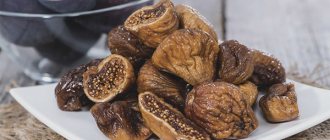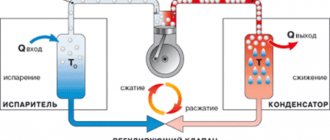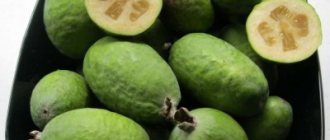By increasing the heat above this temperature, you will not dry out the leaves, but will contribute to their wilting, darkening and curling.
Alternative blow drying
Microwaves and ovens are not the best way to obtain a herbarium. In addition, you have to periodically monitor the safety of the petals. The advantage of a hairdryer is that the flowers do not darken. Most parents, when preparing a herbarium for their child for school, dry the plant using this device. A very ordinary hairdryer without any bells and whistles will do. The main thing is that you can regulate the speed of hot air supply. If you turn on the device at full power, the leaves may quickly curl. In order for the herbarium to turn out well, the plant is allowed to “rest” from time to time, and then dried again with a hairdryer.
Tips and don'ts when ironing
In order for the process of smoothing out folds and creases on a coat to be effective and safe, it is important to adhere to the following expert advice:
- To keep the fabric soft and tender after washing, use a special conditioner; it will make it easier to smooth out wrinkles;
- It is better to iron sleeves on special ledges on the ironing board;
- when ironing your shoulders, it is advisable to place a hard pad under the material;
- you need to start steaming the coat at a distance of 20 cm from the fabric, and only when the fabric has warmed up well can it be reduced to 10 cm;
- The seams of outerwear are ironed at the very end of such care; only the nose of the iron is used for this.
There are also some prohibitions, following which you can keep your coat looking attractive without frequent ironing:
- Some wool items cannot be ironed at all; this is indicated on the label. To straighten them out, just hang them on hangers and leave them for a while or place them in a bathroom filled with steam.
- It is strictly forbidden to iron a dirty coat without first washing it. Dirt particles under the influence of high temperature will be absorbed into the fiber even more strongly, and it will be almost impossible to correct the situation.
- Do not rush to iron your outerwear without first reading the label for care instructions.
Dry the leaves using PVA glue
Natural material that is used for crafts and appliques can be flat if it was dried in a book or ironed, or it can retain its original appearance while remaining voluminous. To preserve the collected leaves, you can use the most convenient household product - PVA glue. Due to its availability, glue is found in almost every home, so it is very convenient to use it to preserve collected natural materials.
The advantages of this method include:
- availability;
- Ease of use;
- Possibility of applying any color to foliage.
In addition, there are a number of disadvantages:
- the finished version may look sloppy;
- the result depends on the quality of the glue;
- Leaves in glue darken over time.
To cover the leaves with glue, you need to prepare a substrate to which the natural material in the glue will not stick. Leaves are laid out on top of the blanks, one side up. Using a brush or a piece of foam rubber, you need to apply glue to the product on one side, wait a little for the top layer to set, and transfer the foliage onto clean paper, then repeat the procedure. Once the glue is completely dry, the leaves can be used to create three-dimensional crafts, figures and any other products.
The easiest ways
I have always used three proven methods. With their help, you can save autumn leaves until spring. They are suitable for a herbarium, a bouquet, and interesting crafts. You can even create paintings with their bright autumn leaves and decorate the walls of your home with them. These are the methods:
- dry the leaves in a book;
- use a microwave;
- apply material for decoupage.
Each of these methods has advantages and disadvantages. Now I will tell you more about them.
Varnish for decoupage
This method is similar to drying with PVA, but the result will be better.
To work you will need:
- beautiful leaves;
- sponge brush;
- decoupage varnish;
- unnecessary newspaper.
There is no need to take leaves that are too dry, because during the work they will curl in the corners and sides. A sponge brush and varnish can be purchased at a store that sells art supplies.
It is advisable to start processing on the day the leaves are collected. The work process is very simple. You need to carefully coat the leaves on one side with varnish and lay them out to dry. To do this, you can use not only newspaper, but also any other paper, for example, pieces of wallpaper left over after renovation.
When the varnish is completely dry, you need to apply it to the other side of the leaves and lay them out on the paper again. This technique allows you to completely preserve all the shades of autumn leaves and makes them more durable. Most often I save them this way. I like maple leaves. They are large, with carved edges, and have a long petiole. I make amazingly beautiful bouquets of them that delight the eye all winter.
Applications from autumn leaves
Appliques are one of the simplest types of crafts made from dried leaves. Using leaves of different shapes and sizes, you can create real pictures, which will then become a decoration for your home. You can make a whole series of panels united by a common theme. These can be animals, landscapes, etc. Next, several small master classes will be presented on making applications in the form of an owl, the Firebird, a fish and a lion.
Owl
To make an applique with an image of an owl, you will need:
- small leaves of brown tones (for this you can use oak, willow, birch);
- colored paper;
- a small twig of thuja;
- sheet of cardboard;
- a bunch of rowan berries;
- any tree branch;
- glue.
Before starting work, the leaves and berries must be dried. Once all the materials are ready, it’s time to move on to the most important thing:
- Cut out the outline of an owl from cardboard.
- Birch or oak leaves will represent the ears and paws of an owl; glue them in the right places.
- For feathers, use long, narrow willow leaves.
- Cut out eyes and beak from colored paper and glue them on.
- Glue your owl onto a tree branch, which will become a stand for the craft.
For additional decoration, you can use moss or thuja branches. You can also use rowan trees as owl paws. The product is ready.
Firebird
For the Firebird applique you will need:
- paper;
- leaves of linden, birch and rosehip;
- pumpkin seeds;
- thuja twigs.
And here's what the process itself looks like:
- A linden leaf is glued to the place where the bird's body will be.
- Birch leaf - head.
- Rosehip leaves are glued individually onto the tail.
- Whole sprigs of rose hips will serve as an additional decoration for the tail.
- Glue birch leaves to the body, these will be the wings.
- Eyes are made from pumpkin seeds, as well as decorations for the body and tail of the Firebird.
- The final stage is a tuft from a thuja twig or any other suitable plant.
The firebird is ready.
a lion
Children love different animals, so they will be especially interested in making one of their familiar animals.
What you will need for the lion cub:
- rounded yellow linden leaves;
- black felt-tip pen;
- ash seeds;
- horse chestnut (nuts);
- glue;
- small pine branch;
- scissors;
- a sheet of yellow paper;
- sheet of orange cardboard.
Having collected all the necessary materials, it’s time to start making crafts:
- Draw a lion's head on yellow paper or print the image on a printer and cut it out along the outline.
- For the mane, use linden leaves, gluing them around the head.
- Draw a nose for the lion and glue a chestnut in its place.
- Pine needles will be used for the mustache.
- The ash seed will represent a tongue.
As soon as the craft dries, it will be completely ready.
Fish
What child doesn't know about the goldfish that grants wishes? Making crafts with your own hands will be very entertaining for your child.
To make a fish craft you will need:
- dry leaves of quince and linden, brown and yellow in color, respectively;
- glue;
- marker;
- ash seeds;
- acorns;
- paper scissors;
- sheet of blue paper.
How to do:
- Draw the outline of the fish on blue paper and cut it out.
- Make scales from linden leaves and glue them to the body of the fish.
- Use brown quince leaves to decorate the tail.
- Using acorn caps, draw the outline of the fish’s head.
That's it, the real goldfish is ready.
Every autumn, colorful leaves delight the eye as they fall to the ground. This beauty quickly fades in the rain, turning the leaves into a solid brown mass. However, there is a way to preserve the beauty and brightness of autumn leaves - dry them or skeletonize them and use them to make various things from children's crafts to interior decorations. This activity will appeal to both children and adults.
Glycerol
Treatment with glycerin can hardly be called drying, since this substance replaces water in plant tissues and thus helps preserve the appearance of greenery and some flowers. Thanks to glycerin, the leaves remain elastic and suitable for arrangements for several years.
The color of such leaves can vary from cream (boxwood) to chocolate (rhododendron). Some plants can turn different colors, for example, eucalyptus will turn bluish-green when exposed to glycerin, and rose and beech will turn dark green or brown depending on the species and when they were cut.
Treatment with glycerin in a vertical position This method is applicable for plants such as beech, harria, hydrangea, pear, oak, willow, camellia, cotoneaster, cherry laurel, magnolia, mahonia, molucella, holly, ferns, pittosporum, broom, rhododendron, rose, rosemary , rowan, boxwood, eucalyptus, barberry, spirea, hawthorn.
Plants must be carefully prepared for preservation in glycerin. Deciduous plants for preservation are cut in mid-summer, evergreens - at any time.
Last news:
Pregnancy and childbirth
From birth to one year
From 1 to 6 years
From 9 to 16 years
Family
useful links
or login using:
or login using:
THANK YOU FOR REGISTERING!
An activation letter should be sent to the specified e-mail within a minute. Just follow the link provided and enjoy unlimited communication, convenient services and a pleasant atmosphere.
RULES FOR WORKING WITH THE SITE
I give my consent to the processing and use by the web portal UAUA.info (hereinafter referred to as the “Web Portal”) of my personal data, namely: first name, last name, specified dates of birth, country and city of residence, email address, IP address, cookies, information about registration on websites – social Internet networks (hereinafter referred to as “Personal Data”). I also give my consent to the processing and use by the Web portal of my Personal data taken from the websites I specified - social Internet networks (if indicated). The Personal Data provided by me can be used by the Web Portal solely for the purpose of my registration and identification on the Web Portal, as well as for the purpose of my use of the Web Portal’s services. I confirm that from the moment of my registration on the Web portal, I was notified of the purpose of collecting my Personal data and the inclusion of my Personal data in the personal database of users of the Web portal, with the rights provided for in Art. 8 of the Law of Ukraine “On the Protection of Personal Data”, read. I confirm that if it is necessary to receive this notification in written (documentary) form, I will send a corresponding letter to the address indicating my postal address.
A letter has been sent to the specified e-mail. To change your password, simply follow the link provided.
We use wax
I recently learned that there are other ways to preserve autumn beauty. One of them is treating the leaves with wax. This method is also quite simple, but only adults should use it.
You need to prepare the following materials and items:
- leaves;
- an old frying pan or saucepan that you no longer use for cooking;
- candle;
- a sheet of wax paper (you can also use clothespins).
It is better to take a white candle, because colored wax will slightly change the shades of the leaves you collected. First you need to carefully sort through them, throw away all the torn and twisted ones. The rest need to be wiped off if they are wet.
Next you need to melt the wax. To speed up the process, the candle can be cut into pieces. Melt the wax not over a fire, but in a water bath. When it becomes liquid, you need to take the leaf by the tip of the petiole and dip it in wax. It is recommended to do this 2-3 times to get a thicker layer.
Next, the leaf can be placed on wax paper or hung by the petiole on a rope using a clothespin. You need to use waxed paper, because wax can stick to any other paper. This method allows you to perfectly preserve all the shades of an autumn leaf.
In the microwave
This method is also very simple. The good thing about it is that you can get the material for crafts in just a few minutes. A microwave comes in handy if a kindergarten or school suddenly requires you to bring a herbarium urgently.
Despite its apparent simplicity, there is no need to entrust a child with drying the leaves in this way. The fact is that the drying process should only take a couple of minutes. If the sheet is left in the oven, it will turn black and wrinkle. It is difficult for a small child to count down the required time, so it is advisable that an adult do this work.
Before putting the leaves in the microwave, you need to remove moisture (if any) from them. You can dry several leaves at the same time in the oven. To prevent them from sticking together, do not place them next to each other. There should be a small distance between the sheets.
You need to place them on a paper towel folded in two layers. Cover the top with another layer of paper. Carefully place this structure in the microwave and turn on the device for 30 seconds. During this time, the leaf will not have time to become completely dry. Therefore, you will then need to turn on the oven several times for 5 seconds. The maximum amount of time a sheet should spend in the microwave is only 3 minutes. If you leave it too long, it may even catch fire. That is why such work must be done by an adult.
20 ml of peroxide per liter of water: 5 tips for growing strong pepper seedlings
A new type of ancient rock has been discovered deep beneath the ocean.
Picking up friends and visiting teachers: signs of toxic parents
If you really need it, the leaves prepared in this way can be used immediately. However, it is better to give them a little more time for final drying. After microwaving, place them in a dark place overnight. It's even better if they dry for a day or two.
If you notice that the sheets are becoming faded, immediately treat them on both sides with acrylic spray.
We use wax paper
In this case, we don't need a candle. This method is not very complicated, but it requires attention. You need to prepare:
- beautiful leaves;
- scissors;
- iron;
- two sheets of wax paper of any color.
Leaves brought from the street should be carefully examined and wiped if there is moisture on them. After this preparation, place them between two sheets of wax paper and iron them.
The high temperature will cause the wax on the paper to melt and stick to your leaves. The steam function cannot be turned on. Keep the hot iron on the piece of paper for no more than 3-5 minutes on one side and the same amount on the other.
After ironing for 5 minutes, try the sheet. If it is not completely dry yet, repeat the procedure again. When the wax on the leaf hardens, you need to take scissors and carefully trim off all excess.
Under pressure
You can also dry leaves for herbarium or handicrafts under an improvised press, for this:
- Lay a white paper towel or regular office sheet on a flat surface.
- Place the prepared material in one layer.
- Cover with several layers of paper.
- Lay out the leaves again.
- Repeat the procedure in several levels.
- The resulting “pie” is covered with paper and pressed evenly on top. As a press, you can use a thick book or any flat object on which a heavy load is evenly placed.
The leaves will dry in this way for the same amount of time as in a book; to speed up the process, you can replace the damp paper with new one every couple of days.
When laying leaves for drying, it is important to ensure that their edges do not intersect with each other, otherwise they may stick together.
How to dry flowers for a herbarium?
Special attention should be paid to drying the buds along with the stems. They do not dry as they grow. If a stem is needed for a composition, it takes a very long time to dry, but eventually becomes very brittle.
How to dry flowers for a herbarium:
- For compositions where the stems are glued to the surface before drying, they are cut into two halves lengthwise. Thus, a semicircle is obtained. It is in this form that the stems can be dried.
- If it is necessary to dry the buds for a volumetric composition, then volumetric drying is carried out. For these purposes, it is first necessary to separate the buds from the stem. Moreover, the cut should be diagonal, that is, oblique.
- Now the stem is split into two parts lengthwise to make a half. It is necessary to place the stem between the books and clamp it with a weight. In this state it will dry for 3 weeks.
- The bud is dried separately. To do this, you need to take a container and fill it with 2 cm of river sand. Next, the bud is laid out and with the help of a scoop, the petals are filled in one by one with rocking movements from side to side.
- In this way, it is possible to preserve the color, as well as the volume and shape of the petals. It is necessary to leave the rose or other flower for about 2 weeks. You can also use other fillers such as starch or semolina.
- Please note that river sand, before being used to dry plants, is first calcined for 1 hour in the oven. It is necessary that it becomes completely dry.
- It can be sifted to remove any heavy inclusions that may damage or cause dents in the petals.
Powder drying
In this case, powders are free-flowing substances that differ in hygroscopic characteristics: borax, semolina, salt and even chalk. The leaves will also dry perfectly if you immerse them in regular flour, potato starch or sand from the river (calcined in a frying pan), but you will not be able to maintain an even shape.
In addition, ordinary cotton wool will absorb water perfectly. The positive side of this type of drying is that it allows you to completely preserve both the shape and color of foliage and plants.
However, the process of such drying will not be very fast.
Borax and silica gel are considered very expensive materials, although they help quickly dry out all foliage and plants.
A cheaper drying method is using corn or wheat flour, as well as starch.
In a small container, you need to pour a certain amount of absorbent at the bottom, carefully lower the leaves or inflorescences inside, and cover the top with the material used. Drying is usually completed in 5-7 days.
Other methods
Don’t forget about emergency measures like smoothing out a sheet of paper. If time does not allow you to study, use methods using an iron, a press, or run to specialists, then there are ways to quickly improve the situation:
- You can try spreading a sheet of paper on the edge of the table. It is better not to use this method with important documents, since they can tear under strong pressure, but it is perfect for smoothing out crumpled money.
- If the original document is not needed very often, then a photocopy will help you. But here it is better to go to a large copy service. Professional equipment will press the document harder than homemade equipment, and in addition to a high-quality copy without traces of creases, it can help straighten the paper a little.
- Processing printed text at hot temperatures may cause it to melt and eventually stick to the fabric it is lying on. Therefore, heating should be carried out gradually, starting from the lowest temperature.
- Don't forget to be careful - before working with the iron, read the recommendations for its use.
- To ensure that there are as few situations when you have to restore a document as possible, just purchase a convenient plastic folder for papers.
- Remember that paper is afraid of damp rooms and direct sunlight.
Content:
Do you have a document that you accidentally sat on, accidentally wrinkled or folded by mistake, or even made an airplane out of it? Even after such a test, the document can still look presentable if you lightly wet it with distilled water and then place it between two heavy books or iron it through a towel. But remember that these methods are risky as the paper may tear and colors may disappear. You may be better off taking your very important documents to a professional restoration shop.
How to store dried leaves
The place for storing leaves for the herbarium should be dark and dry. The storage temperature does not matter. The air in apartments in winter is often too dry, which can have a bad effect on the collected material, so a glazed balcony or loggia can be an excellent place for storage.
The best storage containers are spacious cardboard boxes that prevent the workpieces from breaking and protect them from sunlight.
Useful tips
- The sheet should be heated gradually, starting from the lowest temperature. At high temperatures, paper can melt and stick to other surfaces.
- All procedures must be carried out extremely carefully, because the documents being restored are often of particular importance.
- Papers should be stored in special plastic folders, so the problem of wrinkled sheets can be eliminated.
- Paper is a material that does not like direct sunlight, dampness and water.
Important! The use of hair curlers and a hair dryer is strictly prohibited, as such attempts to straighten the paper will end very badly
Solving the problem urgently and quickly
If crumpled paper needs to be smoothed out quickly, you can use the following recommendations:
- Roll the sheet on the edge of the table.
This measure will help cope with rough folds. This method is more suitable for paper that has been rolled into a roll. To straighten the sheet, you need to take it by the opposite edges, and then pull it up and down several times. It is necessary to control the pressing force so as not to tear the canvas. - Pass through the photocopier. He will compress the document like a press, and the creases will go away. The photocopier must be large, that is, professional. Such devices can be found in offices and copy centers.
A device for home use will not be able to cope with the problem and will most likely damage the paper even more.











